If you have a Twitter account, it’s obvious that you aim to increase your follower count. To leverage your presence and build permanent relationships, you have to interact with other users. But do you know how to analyze your Twitter account engagement?
Social media is an active platform. People follow and unfollow each other continuously. Twitter users mostly follow accounts that share similar hobbies and interests. They also unfollow accounts for certain reasons. Following and unfollowing is an ongoing process on Twitter.
When you share quality content and add value to others, your follower count grows. But sometimes people unfollow you, whether they are not interested in your tweets anymore, whether they find better accounts or they want to refresh the accounts they follow.
Definitely, you want to know the accounts that stopped following you. If you follow people reciprocally, for you, it’s important to track the users that are not following you back.
To track all these engagement activities Soaster provides you with three analysis options:
New Engagements
Following Engagements
Top Engagements
Now let’s see how each type of analysis works.
Table of Contents
ToggleNew Engagements
In the “New Engagements” section, you will be able to check your new followers and recent unfollowers.
By clicking “New Followers“, at the top of the list you can see the accounts that followed you recently. You can also sort out all your followers by influence rate, tweet numbers, follower count, following count, and link date.
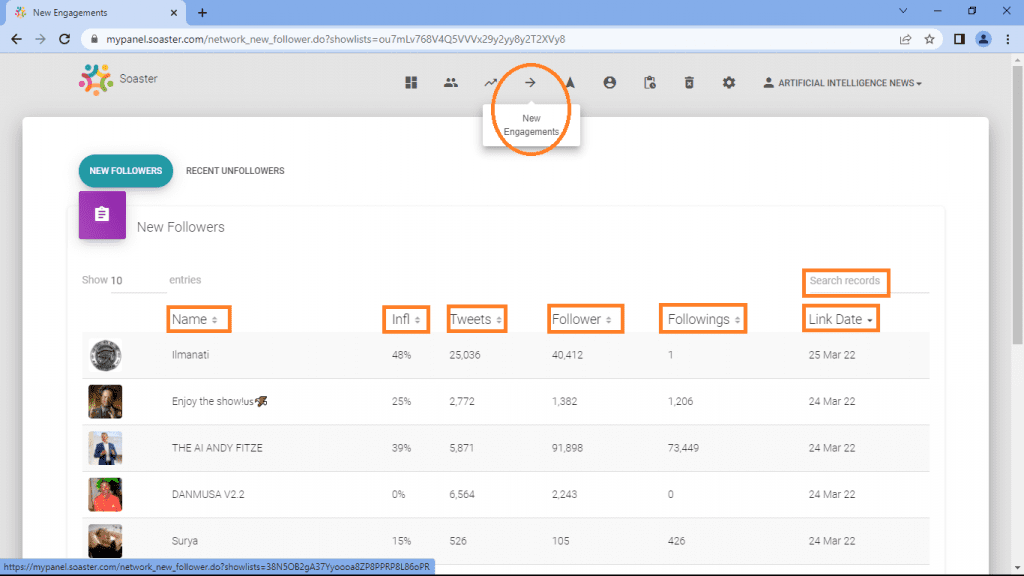
To see who stopped following you, go to “Recent Unfollowers.” Here you can track when these accounts unfollowed you. If you wonder whether a specific user unfollowed you or not, fill in his/her handle in “Search records” and check out.
If you also want to unfollow some of these accounts, click on their profile picture. After checking them one by one, you may decide whether to unfollow or not.
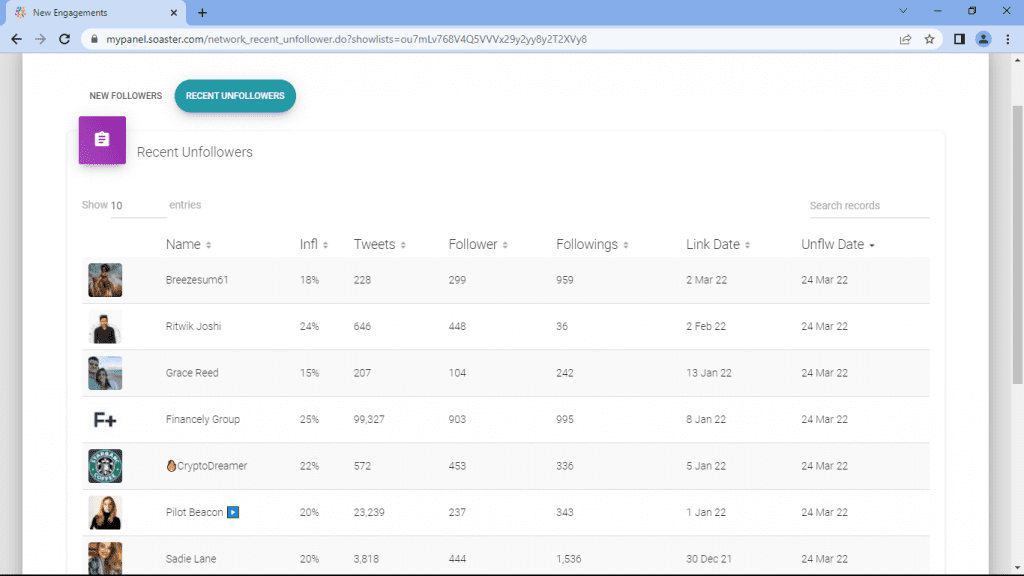

"Following and unfollowing is an ongoing process on Twitter."
Following Engagements
When you try to grow your social media network, reciprocal following is important. Although some people you engage with give you a follow back, others may not follow you for some reason.
With our “Following Engagements” option, it’s easy to know which of the accounts that you are following do not follow you back.
“Followers” section shows the accounts that are following back.
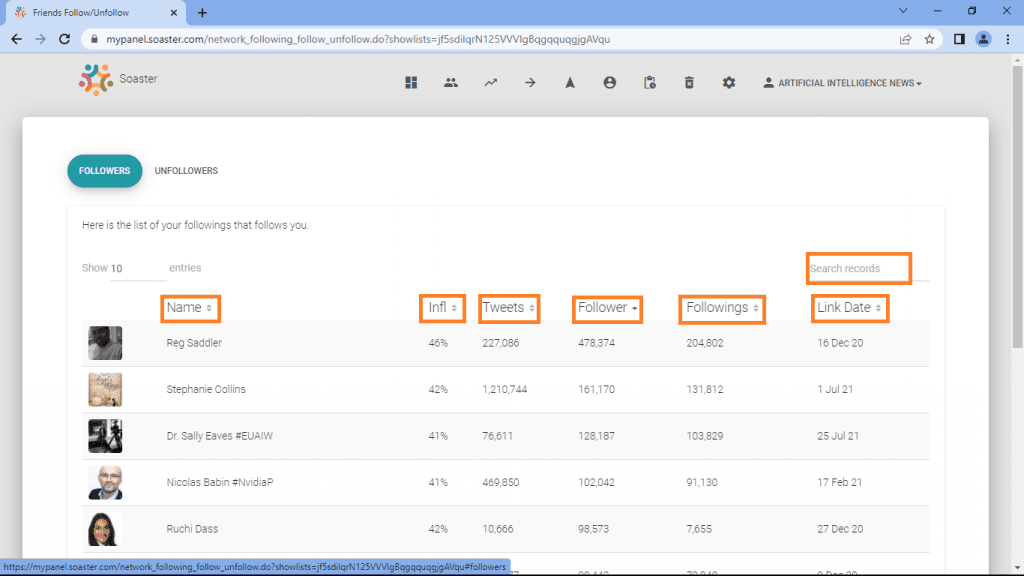

“Unfollowers” section gives what most of the Twitter users want. This option shows the accounts that are not following you back. If you want, you can also unfollow them or try to get their attention.
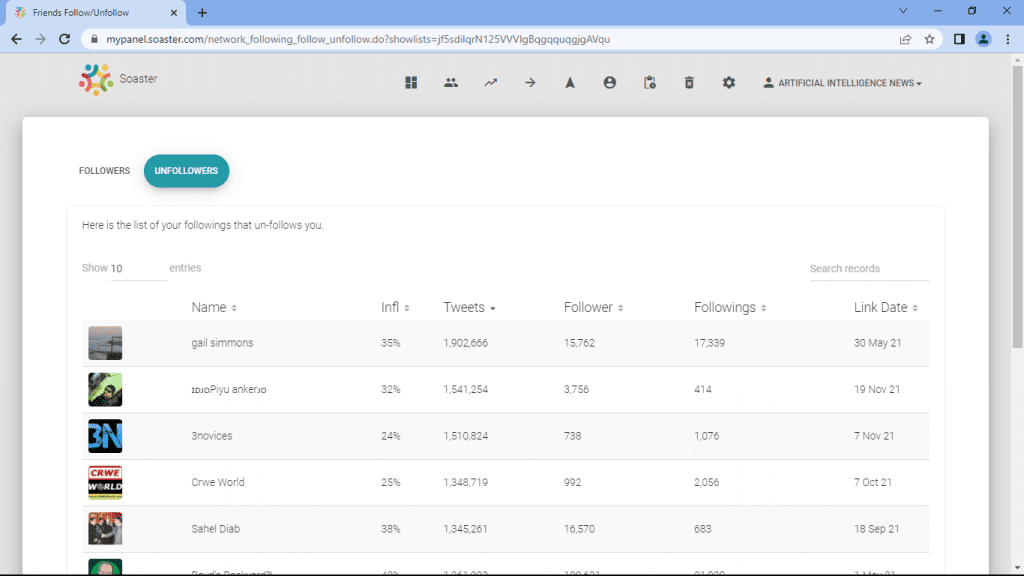

Top Engagements
By clicking on the “Top Engagements” button, you can see a listing of your top 100 followers and followings. By default, they are sorted by influence rate. You can also order them by follower number.
This analysis shows which of your followers and following are the most active and influential on Twitter. Engaging with these accounts can also help you increase your influence rate.
In addition, if you are planning to run an influencer marketing campaign to grow your business brand on Twitter, this analytics will give you an idea of your followers. Check their data and profiles and decide with whom to work. Since they are your followers, they will be more likely to participate in your campaign.
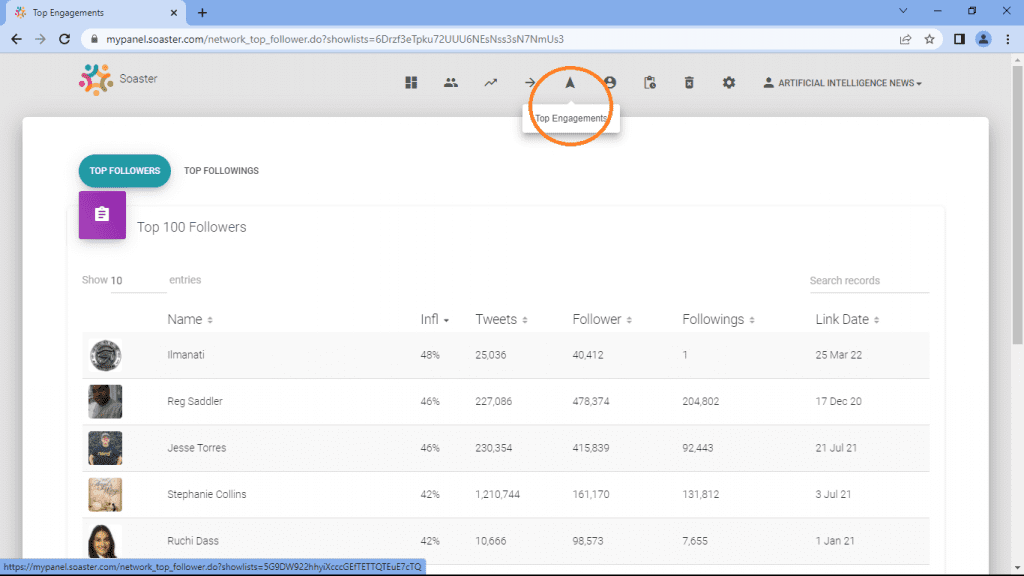



Analyzing your account helps you grow it
To track your Twitter growth, you should frequently analyze your Twitter account engagement. Knowing who unfollows you and who doesn’t follow back will make you ask yourself this question: “Why are these people not willing to follow me? What am I doing wrong?”
Honestly, this question will lead you to take the right steps when managing your Twitter account. Try to fix your mistakes and keep pushing. The process of analyzing and fixing will definitely grow your Twitter account.





